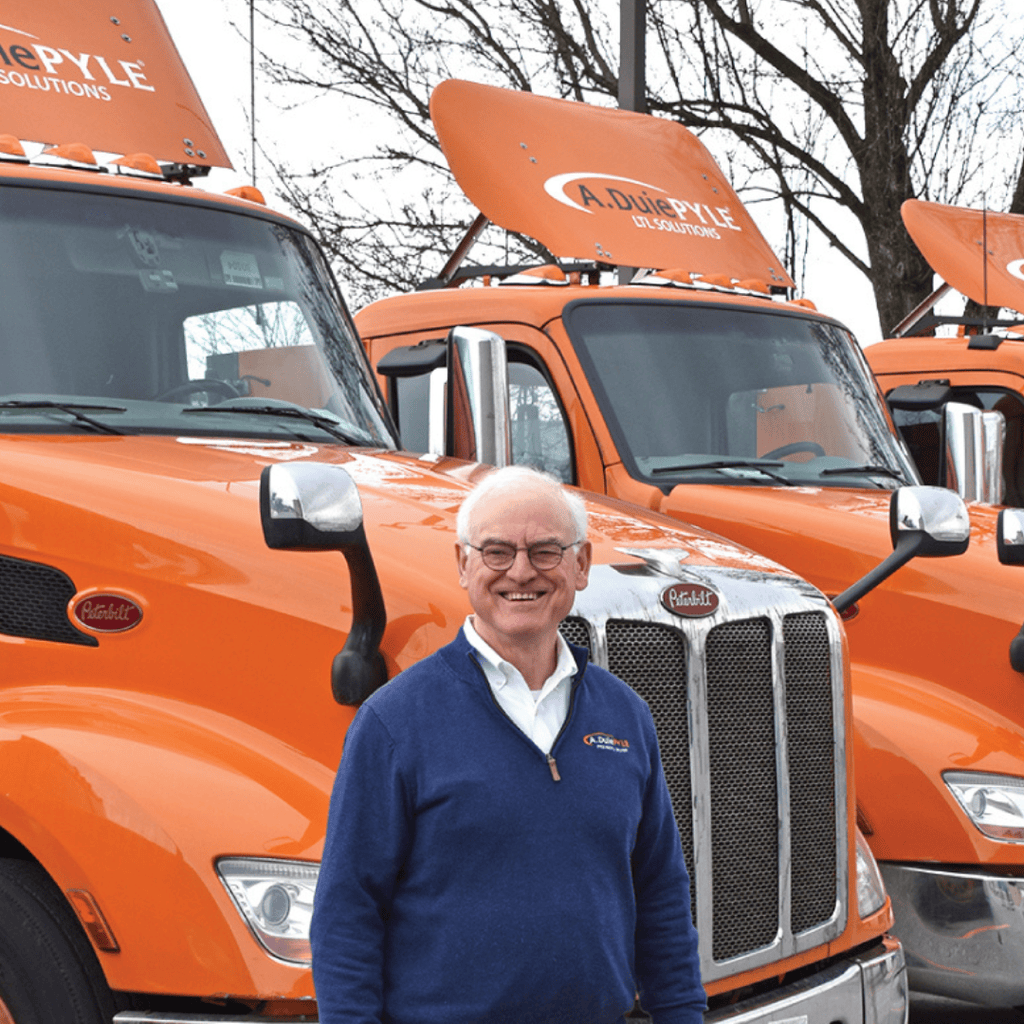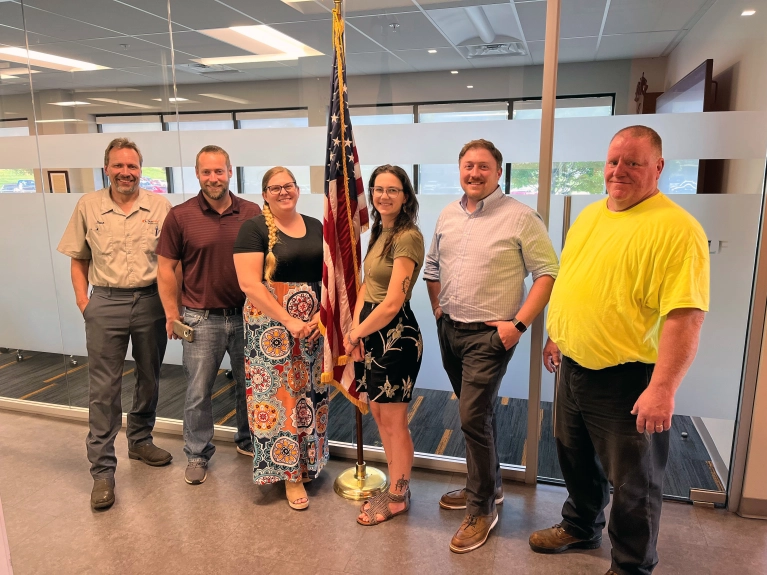
A. Duie Pyle: A new milestone in a long history of success

A. Duie Pyle joins an elite group of American companies this year as the West Chester, Pa., firm celebrates its centennial anniversary. A mere 0.8% of U.S. companies ever hit this mark, and the family-owned transportation and logistics provider is both humbled by and proud of this new milestone in its long history of success. To learn more, we spoke with Peter Latta, the company’s chairman and CEO, to share his thoughts on what it means to reach this major milestone, the changes he’s seen in the industry since assuming his current role and the “secret sauce” that drives A. Duie Pyle’s continued success.
Q: How has the industry changed over the years, and how has A. Duie Pyle adapted to these changes over time?
A: The industry has changed dramatically since the motor carrier industry was deregulated with passage of the Motor Carrier Act of 1980. Of the top 60 motor carriers by revenue in business in 1980, only three survive today in their own skin; the other 57 as we knew them are gone. The competitive landscape has undergone a drastic transformation due to significant changes in operating authority restrictions.
Initially, carriers could only hold either Common Carrier Authority or Contract Carrier Authority which limited carriers to just eight customers due to the Rule of Eight. The ease of obtaining 48-state operating authority through a straightforward application process and proof of insurance resulted in a dramatic shift in the competitive landscape. These operating authority changes created today’s industry segmentation of less-than-truckload (LTL) and truckload carriers.
Another major change was the transition from an industry largely comprised of teamster carriers that numbered 55 of the Top 60 in 1980, versus today where just two of the top 25 LTL carriers are teamsters. There was also a transition from the pre-1980 carrier member rate bureaus— used by carriers to collectively set rates with antitrust immunity—versus today’s unfettered price competition, which has benefitted consumers of transportation services.
Q: What business strategy or practice has driven A. Duie Pyle’s longevity?
A: The engagement and discretionary effort of our more than 4,000 Pyle employees is our single greatest strategic competitive advantage. At its foundation are the six Pyle core values our team members embrace that nurture and sustain our unique Pyle culture, which in turn earns the trust and discretionary effort that, in our service world, becomes a very meaningful competitive edge. Practicing our Pyle #1 core value of treating others as you wish to be treated not only yields positive results for the company it is the right way to live and makes our world a better place.
Q: Can you share a bit about your personal background and what led you to your current position as the CEO?
A: My educational background was accounting and law, followed in my earlier years with practicing as a CPA and later joining a 100+ attorney firm where I practiced general business, tax and labor law. A. Duie Pyle is a family-owned business where I knew I always wanted to return to “hang my career hat,” so to speak. I left the law firm in 1985 and started here full-time. At that time, we had less than 100 employees and were a single terminal LTL company that served a 50 mile radius around Philadelphia. We were in the early years of beginning to learn just what the new world order of a recently deregulated motor carrier industry would entail.
Q: What were some of the biggest challenges you faced personally along the way, and how did you overcome these issues?
A: In 1979 when I was working in the business between college and law school, we endured a 14-week teamsters strike in response to my dad seeking different contract terms than the National Master Freight Agreement. The strike ended when about 30 strikers resigned from the teamsters union, crossed the picket line at their own risk and peril, petitioned the NLRB for an election to decertify the teamsters as their collective bargaining unit, and voted the teamsters out on the eve of our industry’s 1980 deregulation.
Another major disruptive challenge was a 2019 ransomware attack that literally brought us to our knees with the loss of our phones and computer systems, and of course who will ever forget the 2020 COVID pandemic. As with our 1979 strike, it was the engagement, trust and extraordinary discretionary effort of our Pyle team members that allowed us to overcome them, and ultimately become a stronger company from these experiences.
In terms of personal challenges, I was blessed to have a wonderful relationship with my father who was working full-time in our family business when I joined in 1985. He was a member of the “greatest generation,” having grown up on a farm, lived through The Great Depression and served our country in WWII.
He was a wonderful mentor, and witnessing his health decline, his withdrawal from the business, the end of our shared office together, and ultimately observing his passing, was extremely difficult. To this day, I continue to think of my dad regularly, and feel very blessed to have shared the time together that we did.
Q: Describe your leadership style and how it has evolved over time.
A: I’m a consensus builder who believes in leading by example and from the front. I was advised very early on by a wise man that there are two essentials for a successful business: the people have to be happy and the company must be profitable. If you lack either, you will be devoid of both. I have always endeavored to lead in a manner that achieves both of these essential ingredients.
Q: As a third-generation business owner, how do you perceive the legacy left by the previous generations?
A: The legacy of our first two generations was one of stewardship, where priority was placed on the responsibilities of owners, and not the benefits of ownership. In short, my grandfather and father’s mantra was do the right thing for the long-term job security and welfare of the company’s employees and their families, who, at the end of the day, are the backbone of any company’s success. We remain steadfast in continuing to honor this foundational legacy of our family business.
Q: How do you navigate the dynamics of family relationships in a business setting?
A: I always say that in a family-owned business, there are two parts to the business: the business of the business and the business of the family. Loss of focus on either will undermine both. Navigating the family dynamics in a business setting is much easier when the owner’s value set is aligned. To this end, we have reduced the number of owners so that the remaining owners’ values are aligned around stewardship with a priority focused on their responsibilities as owners, and not on entitlement to the benefits from ownership. Otherwise, a large divergence in owner values will be a source of dispute and undermine the sustainability of the family business. As Abraham Lincoln cautioned, “A house divided against itself cannot stand.”
Q: How do you balance respecting the company’s history with implementing modern strategies and technologies?
A: We owe it to our history and legacy to be progressive in protecting the future interests and job security of our Pyle people. This starts with meaningful thought relative to the future and the inevitable forces of change, and positioning to be a survivor and not a fatality. The one constant for us are our Pyle core values, which promote being forward looking in what we do and how we do it.
Q: Can you share a particular achievement under your leadership that you’re especially proud of?
A: Reflecting on my tenure of family business leadership, I’m pleased that with our expansion from facilities in just one state to locations in 14 states, and from less than 100 people on our Pyle team to over 4,000, that we have been able to stay true to our core values and maintain our cultural compass setting. I am thankful that I have been able to help perpetuate the trust that I believe the Pyle people and their families have in the leadership and ownership of the company.
Q: How do you plan to prepare the next generation for taking over the business?
A: Generational transitions of ownership in a family business is a process, not an event, and there are many pieces to this puzzle. Among the family business risk mitigation pieces are proactive estate tax planning, family employment policies, preemptive strategies to diminish impacts of owner domestic dislocation, business governance planning and structure, and a host of other elements.
This has been an ongoing process for us for over 20 years. While not complacent, I feel very good about where we are. Understanding the lessons of family business continuity history, and that only three out of 100 family-owned businesses survive through the fourth generation of ownership, I have a high level of confidence we will be one of the three and not one of the 97.
Q: What advice would you give to other family businesses striving for longevity and success?
A: Pay attention to both the business of the business and the business of the family. Work to ensure that the business is professionally-led, but influenced by family values. Be willing to make the tough family decisions when needed to “protect” the business from the family.
Q: Looking back, is there anything you would have done differently in your career or in managing the business?
A: I’ve made more than my share of mistakes along the way, that’s for sure. That said, I’ve always tried to make the decision that was in the best interest of the affected stakeholders based on what I knew and believed at the time. Retrospectively, with the benefit of 20/20 hindsight from the passage of time, while I might have liked to make a different decision, I wouldn’t change my approach to making the decision.
You May Like

A. Duie Pyle trucking makes push to hire veterans
For Independence Day, probably nothing symbolizes the struggle for freedom more than the contribution and sacrifice of veterans. Northeast-based trucking company A. Duie Pyle recognizes that contribution, is inspired by U.S. veterans and makes sure

A. Duie Pyle Gets Temporary Location During Construction
Demand for services has prompted a transportation and distribution firm to lease space in Antrim Township while its permanent center is being built nearby. A. Duie Pyle’s leased 150,000-square-foot integrated logistics facility opened Sept. 1.